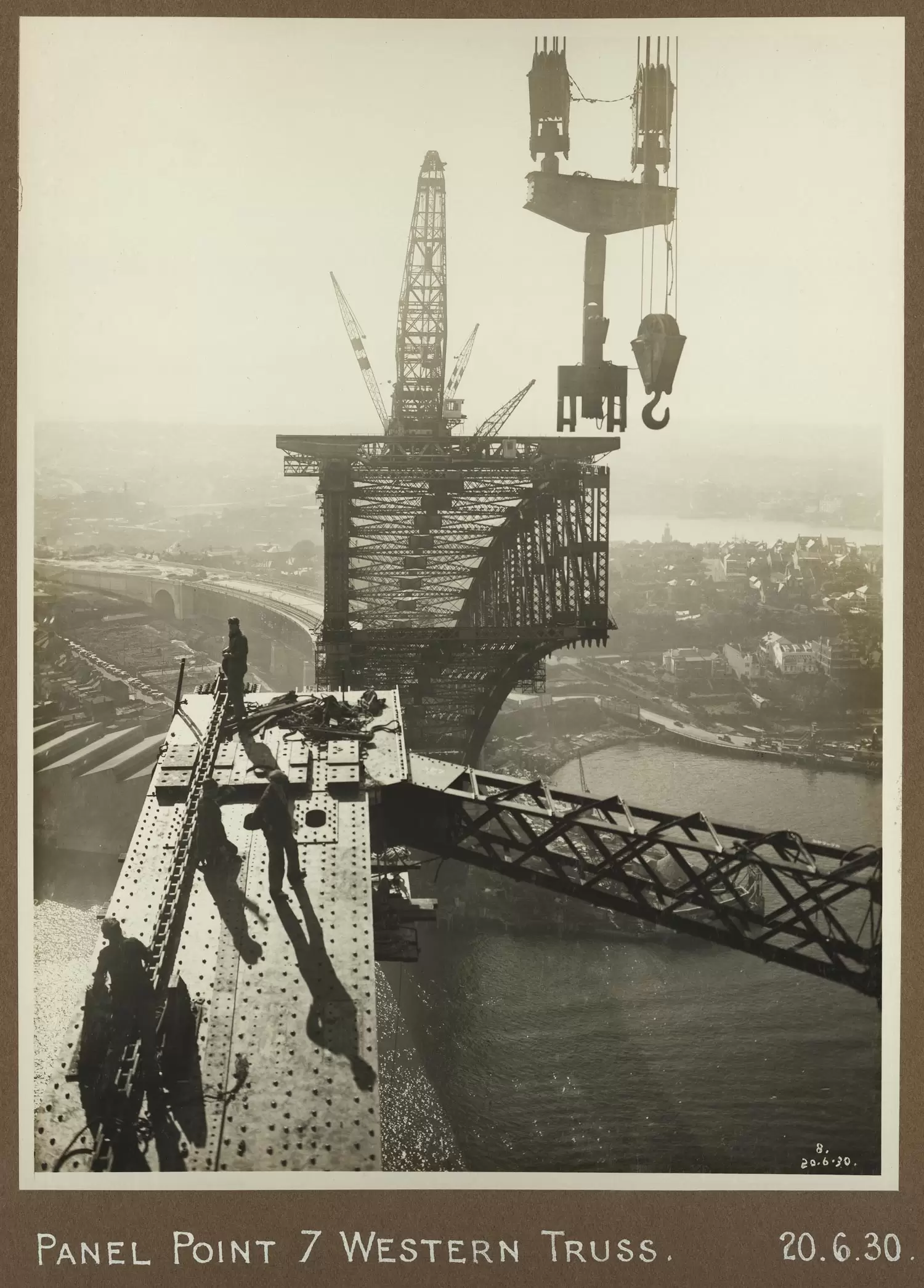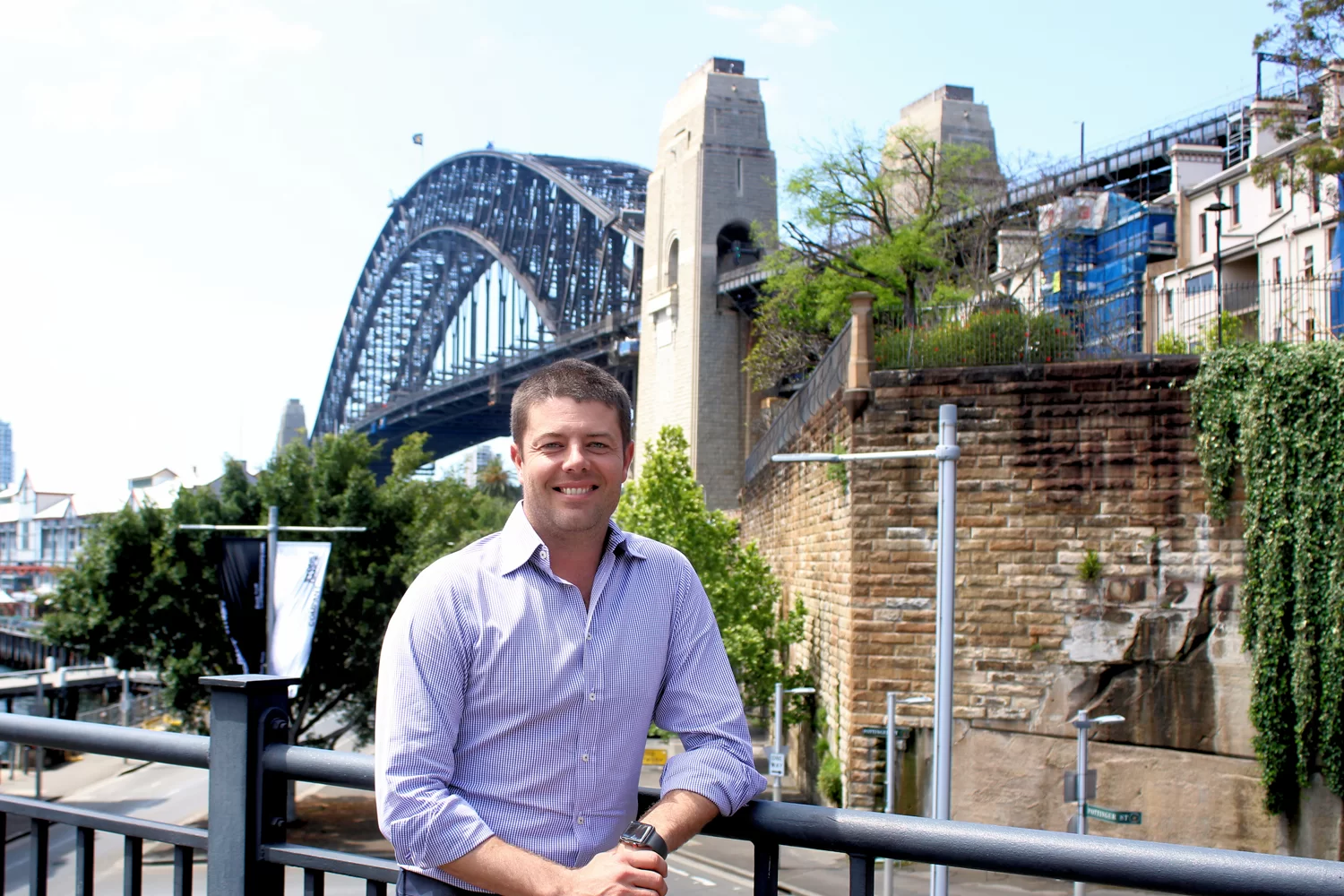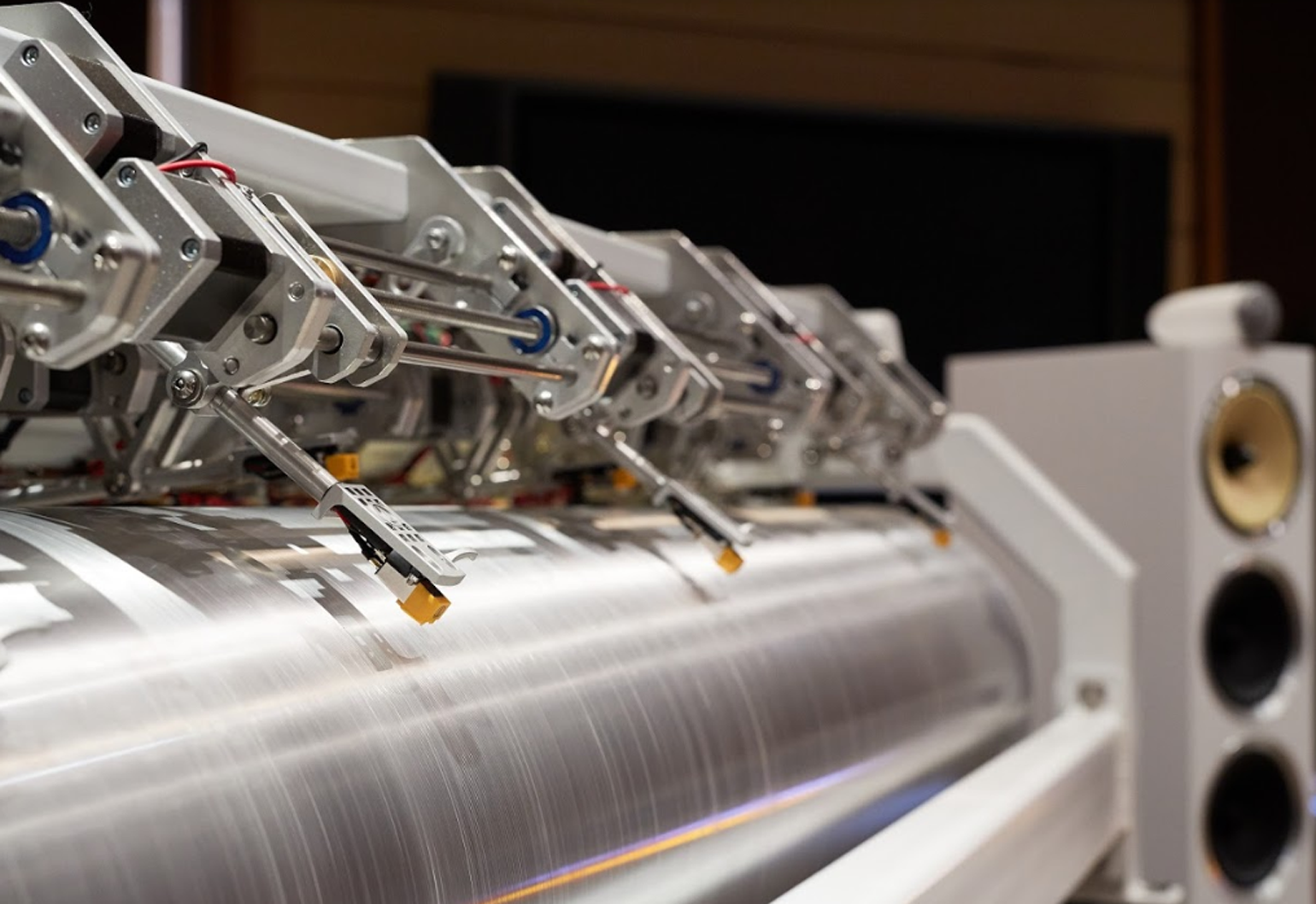In so many ways, the Sydney Harbour Bridge is a marvel, and its success supports the future case for brave design, daring engineering and visionary infrastructure as form, not just function.
An interactive web series produced by the State Library of New South Wales highlights just how different the Sydney Harbour Bridge could have been if one of countless other designs had been decided upon.
Some of the proposals were wonderfully bizarre, such as a three-way bridge connecting Millers Point, Balmain and Balls Head. Vehicles were to stop in the giant centre pylon, entering a massive elevator that would move them up or down to the required level, where they would drive out again.

Some were ridiculous, including a proposal to fill in the harbour and simply build a road. And others were extremely imaginative, such as the suggestion of a floating bridge that could be swung around, presumably by tugboats, to various connection points on each side of the harbour.
The ultimately successful design was by Dorman Long and Co. Ltd, which John Bradfield endorsed but at the time was far from an obvious choice. It was expensive, daring and involved massive risk. Although similar bridges had been completed, it included challenges that had never been attempted before. And the vision demonstrated by the engineer was uncanny.
In the tender document, Bradfield explained the reasoning behind his preferred design, saying the bridge would bring together the past, present and future of this young nation.
“In the upbuilding of any nation the land slowly moulds the people, the people with patient toil alter the face of the landscape; clearing forests, draining swamps, tilling fields, constructing roads and railways, building factories and rearing cities, they humanise the landscape after their own image. Thus in the years to come will result the perfected product, land and people, body and soul, bound together by innumerable and subtle ties,” he wrote.
“Future generations will judge our generation by our works. For that reason and from considerations of the past, I have recommended granite, strong, imperishable, a natural product, rather than a cheaper artificial material, for the facing of the piers, although the cost is £240,000 greater; humanising our landscape in simplicity, strength, and sincerity.”
Most astounding and accurate — although he related it specifically to a military theme — was Bradfield’s vision of how the bridge might be used by future generations for national celebrations.
“At times of national rejoicing … the arch bridge would be unique in that it could be illuminated to represent the badge of the Australian Commonwealth Military Forces, the sun and crown, a fitting tribute to our soldiers, unparalleled in the annals of any nation.”
Lessons for now
“This guy is like Shakespeare,” said Joe Turner, Principal Bridge Engineer at BG&E.
“He’s a bridge engineer Monday to Friday and a philosopher on the weekends. It’s as if he knew exactly what this bridge was going to mean to us 100 years later.”
Turner looks out onto the Sydney Harbour Bridge from his office window and rides his bicycle across the bridge almost daily.
“It’s easy to take it for granted, but I do like to look at little features of the bridge and recognise the various design challenges,” said Turner, who studied engineering at the University of Sydney, Bradfield’s alma mater.
The challenges involved in building such a bridge, minus today’s computational power and software packages, are almost overwhelming, he said. And it is amazing that the way the bridge was built, from 1923 to 1932, still shapes so many lessons for today’s works, even with modern-day technology.

“The steel arch cannot really be more efficient,” he said.
“It was designed not just for vehicles, but for horses and carts and for trains. Fast-forward 100 years, and the next couple of centuries, and from a loading perspective you see the loads increasing four or fivefold. There was real thinking around future loads and numbers of lanes and tracks.
“There are lots of very small members that make up some of the lattice and bracing for the bridge. That is extremely efficient. Today, we try not to use so many small members, primarily because of the cost of maintenance and labour today versus the cost of materials. Back then, materials were the big cost, so they tried hard to minimise total tonnage. Today, the big costs are people and safety. But we can learn to build more efficiently from the way it used to be done.”
There are also lessons around planning for geometry control, Turner said. The truss of the bridge rises and falls about 30 cm between hot days and cold nights. Even as it was being built, it was “wobbling around like a fishtail in the sun”, he said.
“Imagine the challenges they would have had back then, doing the surveys and all of the mathematical calculations by hand, figuring out where this thing is going to be on a 40-degree day, and where they should add the next piece.
“We as engineers today are very quick to forget all of that and instead lean on the luxury of computer software. The actual physics of engineering hasn’t changed much, but the tools are completely different.”
At the same time, Turner said, there were some surprising similarities to today’s builds during the planning of the Sydney Harbour Bridge.
One, for instance, was a public expectation that it would be built by an Australian business and using mostly Australian-sourced materials. That political imperative to ensure the local economy benefits during a build, it seems, is as old as engineering itself.
Maintaining an icon
Few people know the Sydney Harbour Bridge better than the person responsible for its maintenance.

As the Strategic Infrastructure Manager for the Asset Sydney section of Roads and Maritime Services, civil engineer Peter Mann is famously responsible for the maintenance of the Sydney Harbour Bridge. This offers him intimate knowledge of the iconic structure, as well as a unique point of view on its strengths and weaknesses as a piece of engineering.
Knowing what he now knows, Mann said, there are one or two things he would change if he could go back in time and chat with John Bradfield during the design process.
“The arch is made of silicon steel whereas the deck and approach spans are made of carbon steel,” he said.
“Silicon steel is much stronger and more durable in a hostile marine environment and, despite the extra cost, would have been a better choice.
“Access within confined or tight spaces is a major maintenance challenge, particularly in regard to modern safety standards. The plan is to keep the bridge in service centuries into the future, and, in hindsight, more attention should have been made to future-proof the structure.”
But he’d also have some words of encouragement for the legendary engineer. First, he said, “the design has resonated with the public to such an extent that we call it an icon”, indicating the success of Bradfield’s plan to build something that would actually mean something to Australians, and could become a focal point of major celebrations.
“Secondly, the structure was so well designed without the benefit of computers that it can still cope with the current heavy legal loads.”
What if it were built today?
John Steele, Technical Director of Bridges for Australia-New Zealand at Jacobs, recalled attending a harbour cruise during orientation week at the beginning of his engineering degree.
John Steele, Technical Director of Bridges ANZ, Jacobs.Passing under the Sydney Harbour Bridge, he looked up in awe, surrounded by a group of fellow first-year civil engineering students, and felt inspired for the degree and for his future career.
“The experience is possibly different for people from other cities,” he said.
“But certainly if you’re a structural engineer in Sydney, the Sydney Harbour Bridge is very powerful.”
Once the arch of the bridge was built, it would have been relatively straightforward to bring the hangers in and lift the sections of steelwork to build the deck, Steele said. But building the arch and the temporary cable system to hold both sides as they were extended over the harbour, ensuring that they met perfectly in the middle, was a piece of engineering brilliance, he said.
If the Sydney Harbour Bridge were to be built today, it would likely be a very different bridge, thanks to improvements in materials, construction techniques and various trends and forces shaping the broader engineering industry.
“For a span around 500 metres, a cable stayed bridge would be the preferred option,” Steele said.
“We have moved away from the steel arch. In terms of materials, a steel truss arch is efficient but there’s a lot more labour involved in construction. Whereas if you’re using prefabbed steel deck or precast segmental concrete, there’s a lot less labour.
“Also, in an environment such as coastal Australia, there is enormous cost in repainting steel trusses, and corrosion is always an issue, with so many members and complex connections to repaint.”

Actually, Steele decides, if the bridge were being considered today, it might have become a tunnel.
“Part of that is driven by expectations of communities,” he said.
“As much as we love our bridges, there are issues around land acquisition, visual impact et cetera, that have become more important factors than they used to be. Tunnelling techniques have also become more efficient. For example, the proposed Western Harbour Tunnel and Beaches Link projects in Sydney have adopted tunnels to cross Sydney Harbour and Middle Harbour respectively, in preference to bridges.”
Using the Millau Viaduct in France as an example, Steele said there are still bridge engineers who, like Bradfield, have the ability to convince politicians to build unique, stand-out bridges to which communities respond well.
The challenge is finding the perfect balance between form and function. And that’s a problem with which every engineer is perfectly familiar.
This article originally appeared as “Spanning the gap” in the February 2019 issue of create magazine.



